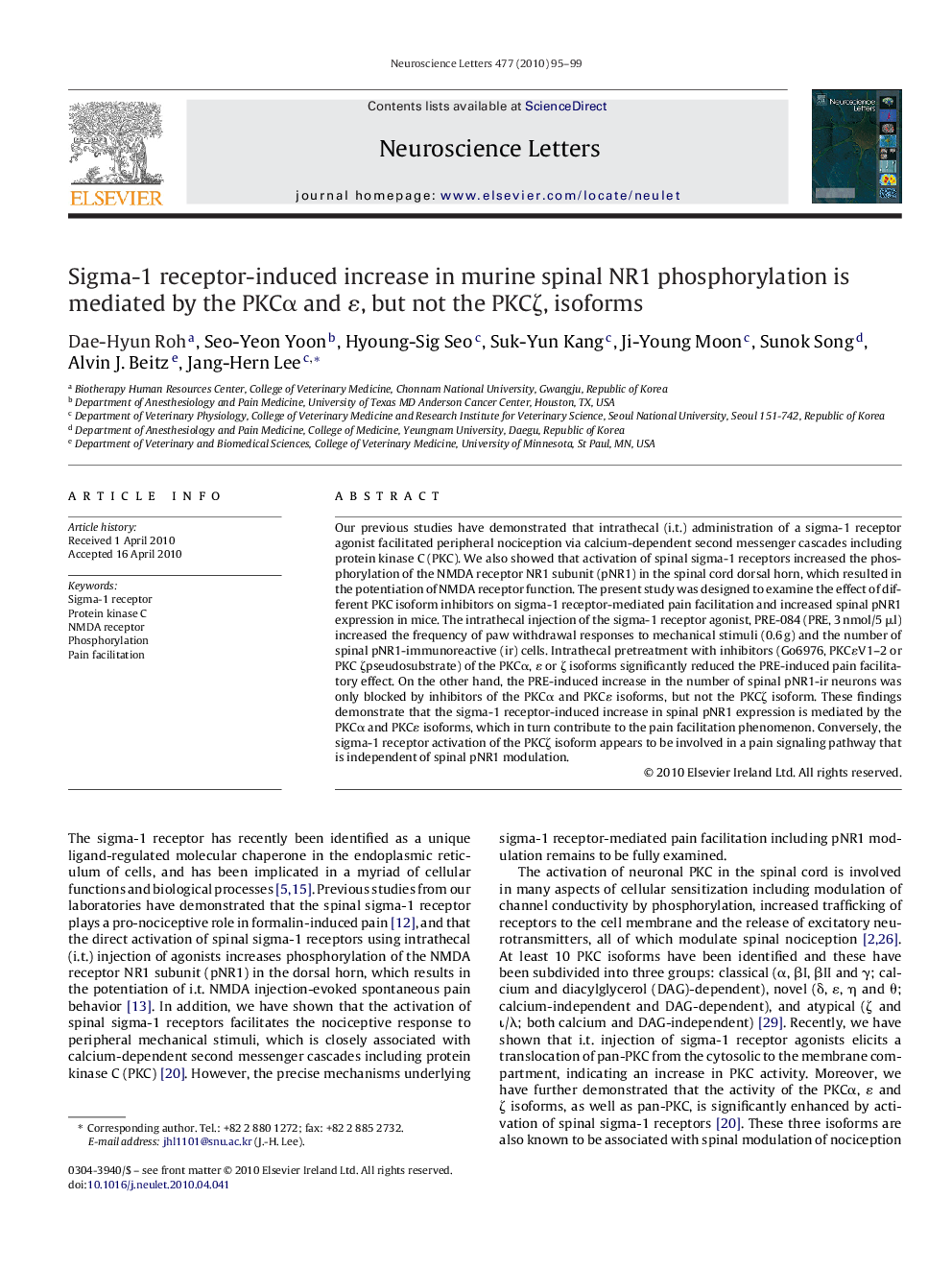| Article ID | Journal | Published Year | Pages | File Type |
|---|---|---|---|---|
| 4346227 | Neuroscience Letters | 2010 | 5 Pages |
Abstract
Our previous studies have demonstrated that intrathecal (i.t.) administration of a sigma-1 receptor agonist facilitated peripheral nociception via calcium-dependent second messenger cascades including protein kinase C (PKC). We also showed that activation of spinal sigma-1 receptors increased the phosphorylation of the NMDA receptor NR1 subunit (pNR1) in the spinal cord dorsal horn, which resulted in the potentiation of NMDA receptor function. The present study was designed to examine the effect of different PKC isoform inhibitors on sigma-1 receptor-mediated pain facilitation and increased spinal pNR1 expression in mice. The intrathecal injection of the sigma-1 receptor agonist, PRE-084 (PRE, 3 nmol/5 μl) increased the frequency of paw withdrawal responses to mechanical stimuli (0.6 g) and the number of spinal pNR1-immunoreactive (ir) cells. Intrathecal pretreatment with inhibitors (Go6976, PKCÉV1-2 or PKC ζpseudosubstrate) of the PKCα, É or ζ isoforms significantly reduced the PRE-induced pain facilitatory effect. On the other hand, the PRE-induced increase in the number of spinal pNR1-ir neurons was only blocked by inhibitors of the PKCα and PKCÉ isoforms, but not the PKCζ isoform. These findings demonstrate that the sigma-1 receptor-induced increase in spinal pNR1 expression is mediated by the PKCα and PKCÉ isoforms, which in turn contribute to the pain facilitation phenomenon. Conversely, the sigma-1 receptor activation of the PKCζ isoform appears to be involved in a pain signaling pathway that is independent of spinal pNR1 modulation.
Related Topics
Life Sciences
Neuroscience
Neuroscience (General)
Authors
Dae-Hyun Roh, Seo-Yeon Yoon, Hyoung-Sig Seo, Suk-Yun Kang, Ji-Young Moon, Sunok Song, Alvin J. Beitz, Jang-Hern Lee,
